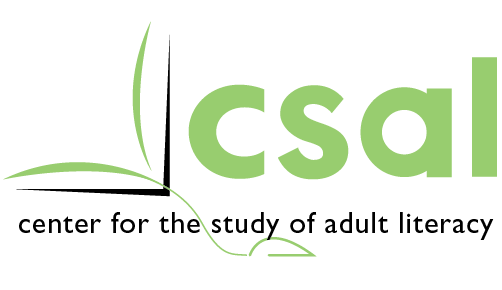Year Five Summary
Every year, nearly 3 million Americans enroll in adult literacy programs to improve their basic skills and some estimates suggest that the need is even greater. Adults in these programs want to increase their literacy skills to improve aspects of their work, family, social, and civic lives. However, we do not completely understand their underlying reading-related strengths and weaknesses, nor do we know the best curricula and teaching approaches to help them reach their reading goals. The focus of our center is to address these areas by attending to the following goals: 1) To collect data on the underlying cognitive and motivational processes that contribute to or impede the reading development of adults who read between the 3.0 and 7.9 grade equivalency levels; 2) To develop and evaluate a multiple component reading intervention for adults who read between the 3.0 and 7.9 grade equivalency levels; 3) To design and collect data from supplemental studies that are aligned with the overall goals of CSAL and are relevant to significant issues in adult education; 4) To engage in national leadership activities that serve the needs of adult education researchers, policymakers, practitioners, and stakeholders; and 5) To disseminate findings of this work.
This report covers our activities from June 1, 2016 through May 31, 2017. During this time period, we engaged in the following activities: a) Phase 1 data entry/cleansing/analyzing, b) Implementing pilot studies, c) Conducting supplemental and additional studies, and d) Performing other center activities.
Classes continued to be taught in a hybrid format, as described in the previous annual report. Specifically, Adult PHAST and Adult PACES were taught face-to-face with the “human teacher.” AutoTutor followed each PACES lesson, followed by independent reading on the computer or with books/magazines. Pre and post data were collected on these students, as well as comparison students. Preliminary analyses indicate Cohen’s D effect sizes for outcomes with a significant Intervention-Control difference ranging from .30 to 1.04 on the following measures: Letter-sounds, Sound combinations, WJ3 Word Attack and Lexia Comprehension. When surveyed about AutoTutor, students indicated that in general, they had positive experiences with AutoTutor: 90.0% liked using CSAL AutoTutor, 88.9 % liked the agents Cristina and Jordan, 84.1% would recommend CSAL AutoTutor to a friend, 74.5% watched the introduction nutshell review videos, and 71.4% liked the length of the AutoTutor lessons.
Observations of both intervention and comparison classes continued this year, with two types of observations conducted: a. generic observations in comparison classes and intervention classes; b. fidelity of intervention observations done in intervention classes. We also continued to maintain and update our website (csal.gsu.edu). We continued to use AWSTATS to keep track of our “page hits,” with April 2017 representing our lowest “hit” month (3,607) and January 2017 representing our “highest” (11,299).
Examples of other center activities described in this report include, supplemental studies, maintenance of an email distribution list, an expert panel on AutoTutor and presentations at conferences.
